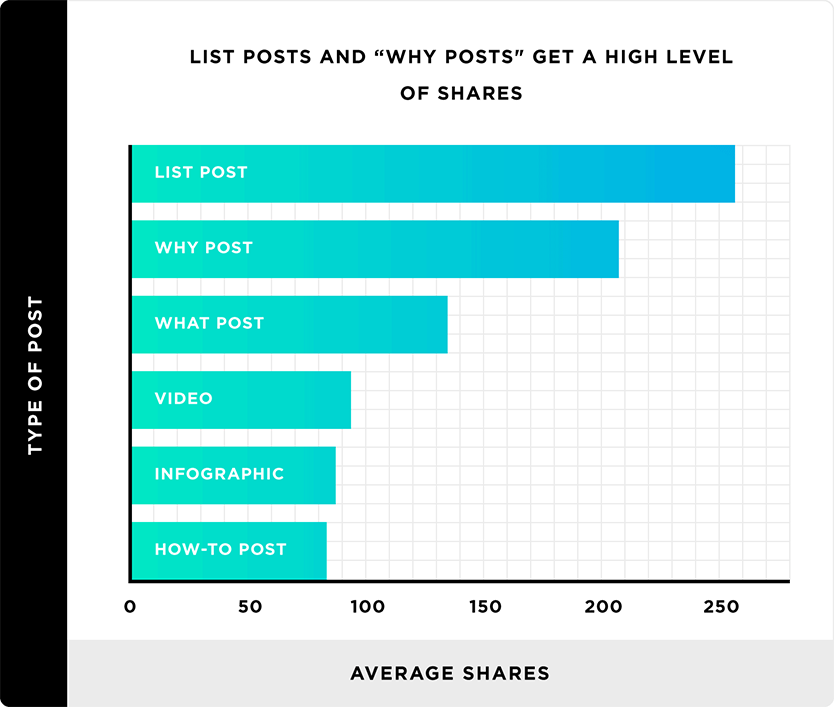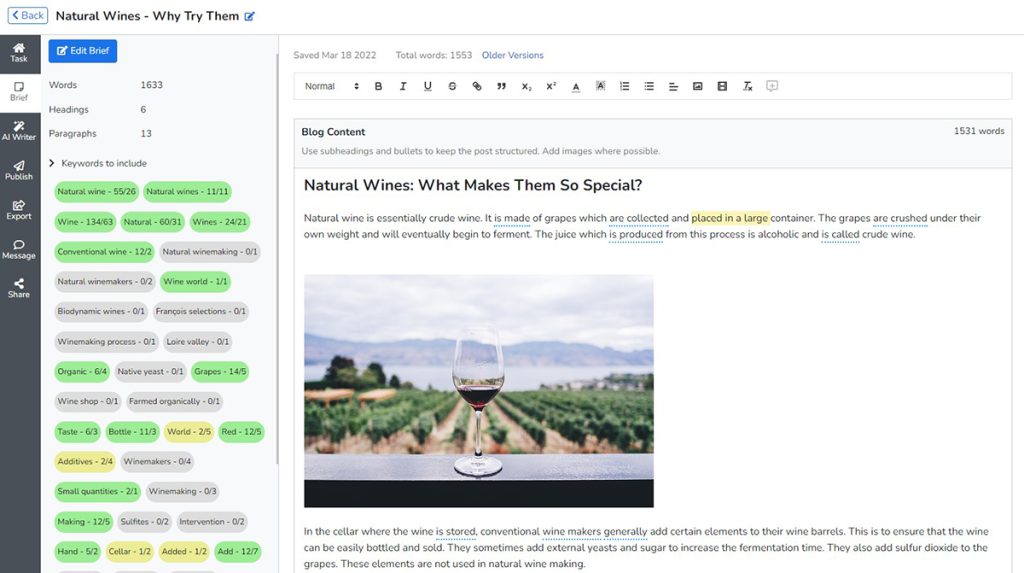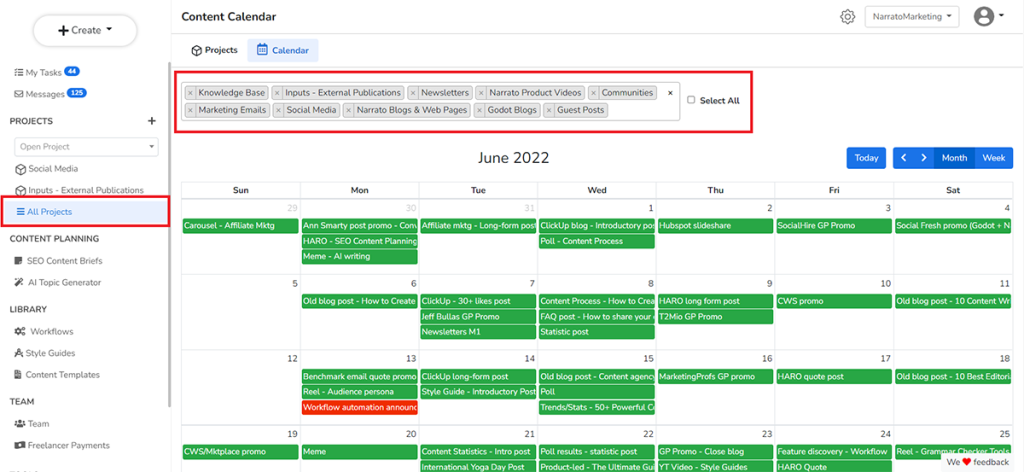
Every great piece of content starts with a well-planned content strategy. This is a fact that can be corroborated by a CMI report, which says that –
64% of the most successful B2B marketers have a documented content strategy.
But even so, many business owners and marketers skip this crucial step and jump right into content creation. This approach might even work initially, but if your fresh content is not targeting the right audiences, is not published consistently, and is not planned, you’ll see your content marketing ROI go down quickly.
A well-designed B2B content strategy can be the key to placing your brand in front of your ideal customers. It will guide you in addressing your customers’ problems and pain points with your content, which will in turn encourage them to learn more about your brand.
So, what does it take to build a winning B2B content strategy? In this article, we’ll discuss exactly that, as we take you through the steps of creating your own content strategy.
B2B Content Strategy: Why Is It So Important?
What is a B2B content strategy? Consider it like a blueprint, roadmap, or content guide for your content marketing efforts, covering everything from your blog posts, and video content to social media posts. It is a set of guidelines you can follow to reach your marketing goals.
Your B2B content marketing strategy will guide you in creating the right content for the right audience and delivering it at the right time. Without it, you can end up losing sight of your marketing goals, and finding your way back will also become difficult.
But when it comes to the B2B content strategy, you can’t just use any old content marketing strategy to build a new one. This is because B2B content marketing is markedly different from B2C content marketing.
- You are not targeting individual customers, but other businesses.
- It’s difficult to sway other businesses with traditional marketing tactics.
- You need to provide them with authoritative content that contains valuable and actionable information for solving their commercial challenges.
So, let’s take a look at how to create a solid B2B content strategy.
11-Step Process Of Creating A B2B Content Strategy

Every B2B company has its own content marketing processes, so your B2B content strategy also has to be unique to you. But some basic steps of building a solid content marketing strategy remain the same. Here they are:
Step 1: Understand your user base
Before you create content, you need to know who it’s going to cater to. This is where audience research comes in. The whole point of content marketing is to encourage conversions, and thorough audience research ensures that you meet the specific needs and demands of your user base.
After all, if your content doesn’t resonate with your user base, the whole process will turn out to be an exercise in futility.
So, how can you identify your user base? This is how –
- Start by creating your buyer persona. This is essentially a semi-fictional representation of what your ideal customer should look like. It includes their demographic information and also the needs, motivations, and pain points of your ideal buyer.
- After creating some buyer personas, you can segment them into different groups based on buyer behavior.
- Decide which subgroup you’d want to target first, and in what order.
Step 2: Research competitors
Since your competitors would also be vying for your target audience’s attention, it makes sense to research them too. Every B2B company would most likely have some competitors unless they’re in a niche that is extremely unique.
In competitor research, you start by looking into what your competitors are offering their target buyers. Find out the reason behind their success, and what you can offer in your business to set yourself apart from the competition. This will be your unique selling point (USP) when you are creating content.
So, competitor research can be summed up as –
Identifying your competitors
Evaluation of their strengths and weaknesses
Identifying your USP, and building it around your strengths
If you’re not sure how to get started with competitor research, it’s quite simple. First, find out some businesses your target customers are interested in. Analyze their online presence. Look at their products, placement, pricing, and promotional strategies, and see what you can do better.
Step 3: Define your content goals
Every good B2B content strategy needs to have some clearly defined content goals that will help you and your content team stay on track. These are the goals against which you’ll measure the success of your content marketing campaigns.
So, how do you determine the right content goals? There’s a very simple way to come up with SMART goals. When we say SMART, we mean that the goals should be –
- S(pecific)
- M(easurable)
- A(cheivable)
- R(elevant)
- T(ime-bound)
Think about what you want to achieve. What are some steps that you’ll have to take to complete the objective?
Step 4: Choose the main content formats and channels
After your buyer and competitor research is done, you can pick the core channels and content formats where you will be focusing your content efforts. When you develop a good understanding of your audience, choosing the right channels and content formats becomes easier.
For B2B companies, the most important channel is SEO blogs, which means that you wouldn’t have to invest as much in paid advertising. You might also want to consider video content and podcasts.
According to Backlinko’s Brian Dean, list posts are the best-performing posts when it comes to the number of social shares. Other well-performing posts include – ‘Why’ posts, ‘What’ posts, infographics, videos, and how-to posts.

In this step, you also have to make sure that you are choosing the right social media platforms for distributing your content. For B2B companies, the most successful platform is usually LinkedIn. But, depending on your industry, you might also want to consider Instagram, Facebook, or Pinterest. You should look for the best time to post on Instagram to drive maximum engagement from your target audience.
Step 5: Decide on amazing content topics and ideas
The success of your B2B content marketing campaigns will also depend on the topics you choose. Since you’ve already completed audience and competitor research, coming up with meaningful content topics and ideas will become a breeze. Using digital asset management software can help you organize, store, and easily access all your content assets, making the process of creating and managing campaigns much more efficient.
Here are some ways you can come up with topics and content ideas:
- Research online forums like Reddit, Quora, and Answer the Public to find out what your audience is looking for.
- Look at your previous content. See which content pieces performed well and which ones did not.
- Use a tool like Narrato AI Topic Generator to come up with some SEO-friendly content topics.
- Do a content preferences survey. Ask your audience directly what kind of topics and content they want to see.
Step 6: Narrow down your content focus with microtargeting
The goal of B2B content marketing is not only to provide your target customers with the best content experience. You also want it to generate brand awareness. For that, you need to ensure that it reaches the right audience. Keyword research and other SEO techniques help you with that.
When we say microtargeting here, we’re talking about both short and long-tail keywords you can use in your content. These are obtained by analyzing user behavior and researching popular search terms on the web.
A tool like Narrato’s AI writer and SEO Assistant can be really handy here. You can generate detailed SEO content briefs here to discover keywords and questions that your audience is searching for.
All you have to do is enter your search term or topic, and your SEO content brief will be generated in a matter of seconds. This SEO brief will contain:
- List of keywords to include
- Competitor references
- Target word count along with suggestions for the number of paragraphs and headings
- Topics/questions to include
What’s better is that Narrato also lets you optimize your content for keywords on its content editor, with dynamic updates on keyword counts.

Besides the SEO brief generator, you can get an AI writer tool that autogenerates SEO-friendly content for a variety of use cases.
Step 7: Decide on a systematic content process
Many B2B marketers and business owners feel that their content strategy is complete after these few steps. But without a well-thought-out and systematized content process, executing your B2B content strategy will become difficult. Your content process is just as important as your content topics, channels, and keyword research.
To ensure a smooth content workflow and efficient content operations, consider investing in a content operations software like GatherContent or some GatherContent alternatives. These tools usually come with numerous capabilities, from content collaboration, and project management to publishing.
Many of these tools also come with a content calendar, which is great for streamlining your content schedule. For instance, you plan your content calendar to include:
- X number of blog posts every month
- X social posts every week
- X ebooks every quarter
- X webinars every 6 months

With a smooth and efficient content workflow, you can ensure that helpful content reaches your target customers at the right time. This will play a huge role in determining the success of your B2B content strategy.
Step 8: Plan your content to be multi-layered
For most marketers, content means words. And of course, words are very effective in conveying your message and getting the audience’s attention. But text-heavy content can be daunting for your readers.
When planning your content structure, make sure you incorporate multi-layered content. Multi-layered content is when your textual content is broken with the help of images, videos, and infographics in different sections. This helps in creating a more visually engaging user experience. Online AI video generators can further streamline this process by automatically transforming your script into engaging visual content, saving time and effort while enhancing your content’s impact.
Take this post for example. If this was a long blog without any visual elements, you might’ve ended up losing interest pretty quickly. Since you are targeting business clients in B2B marketing, you need to ensure that the content contains a good blend of different media types that hold their interest.
Step 9: Content promotion plan
For successful content marketing campaigns, you also need to promote them on the right channels, both organic and paid. Find out where your potential customer hangs out. You might already have the answer to this after conducting audience research, but it’s a good idea to take their demographic into account.
Step 10: Make collaboration and link-building a priority
What’s another way to increase brand exposure? Well, content promotion strategies are one, but you can also collaborate with other businesses and brands to increase your content authority. Yes, we are talking about guest posts.
Guest posting is a great way to build brand authority, and you also get to showcase your connections to the readers. When the audience sees you collaborating with other industry leaders, it’ll increase their trust in your brand.
Step 11: Measure what’s working
No B2B content strategy is complete without analytics and data. You need to measure what’s working and what’s not so that the necessary changes can be made from time to time.
Here are metrics every B2B content team must measure –
- Their current statistics: The total views, social impressions, conversions, and the number of shares on recent posts.
- Trends and benchmarks: Any changes in read time, bounce rate, and the number of active subscribers.
- High-performing content: Top posts with the highest read time, highest views, and highest conversions.

Conclusion
With this, we’ve covered everything you need to know about creating an effective B2B content strategy. With these tips and tools, you’ll be able to
- Generate more qualified leads with your content
- Enhance your brand image
- Occupy a premium place in the competitive marketing environment
But remember, your B2B content strategy needs to evolve with time. Sticking to old methods and techniques will not pay off in the long run. It’s a good idea to revisit your content strategy every year so that you can make the necessary changes.



